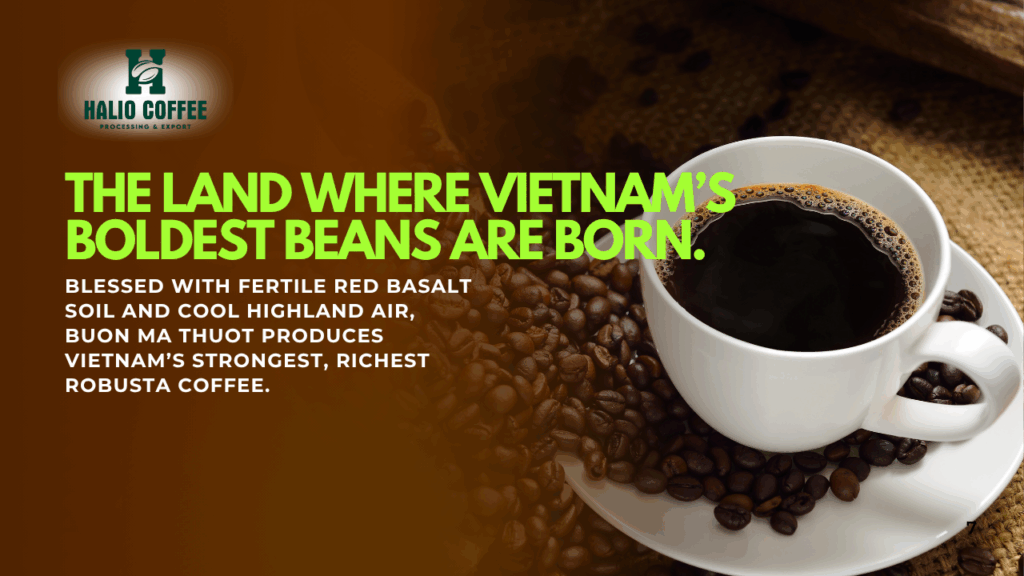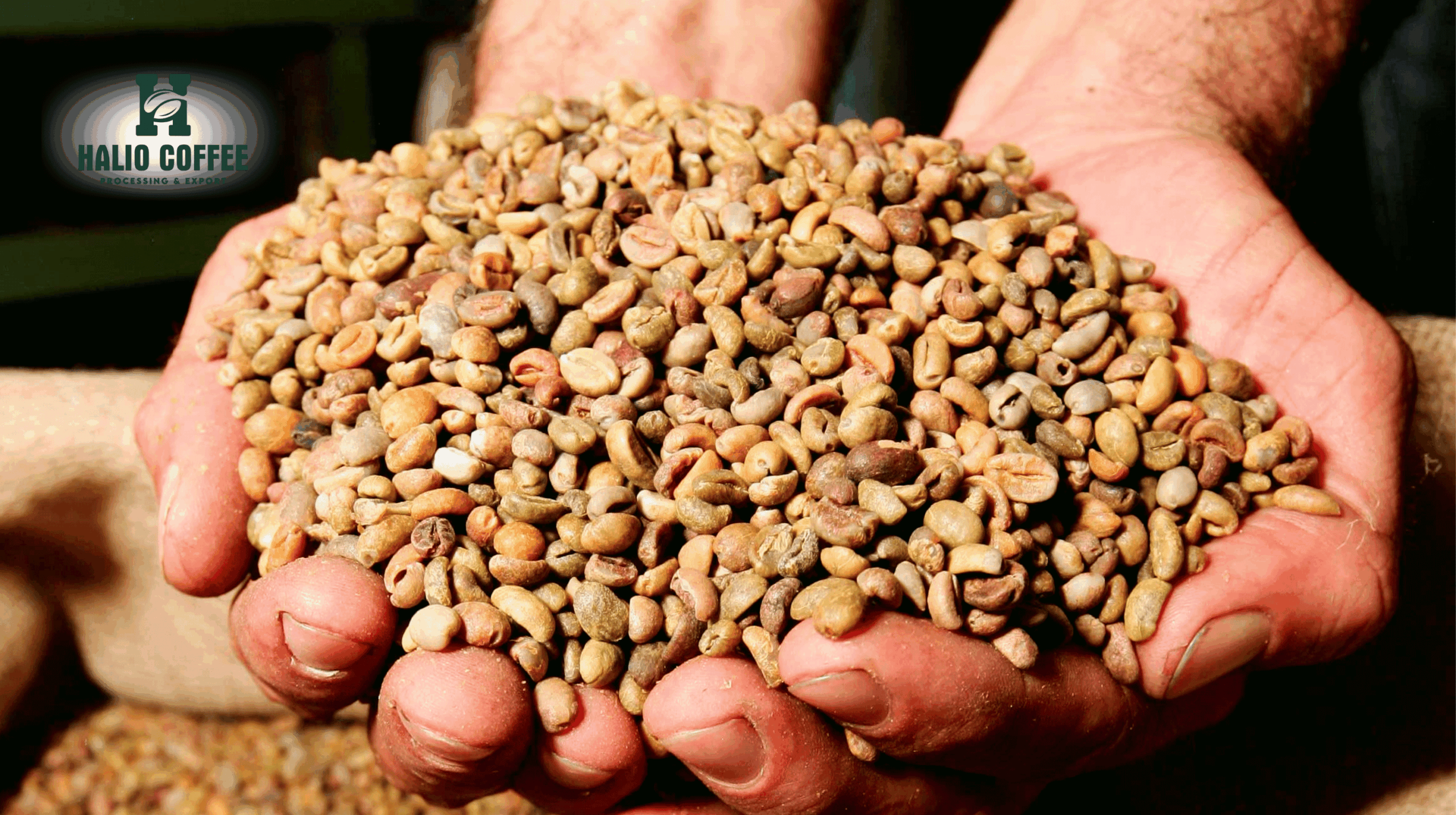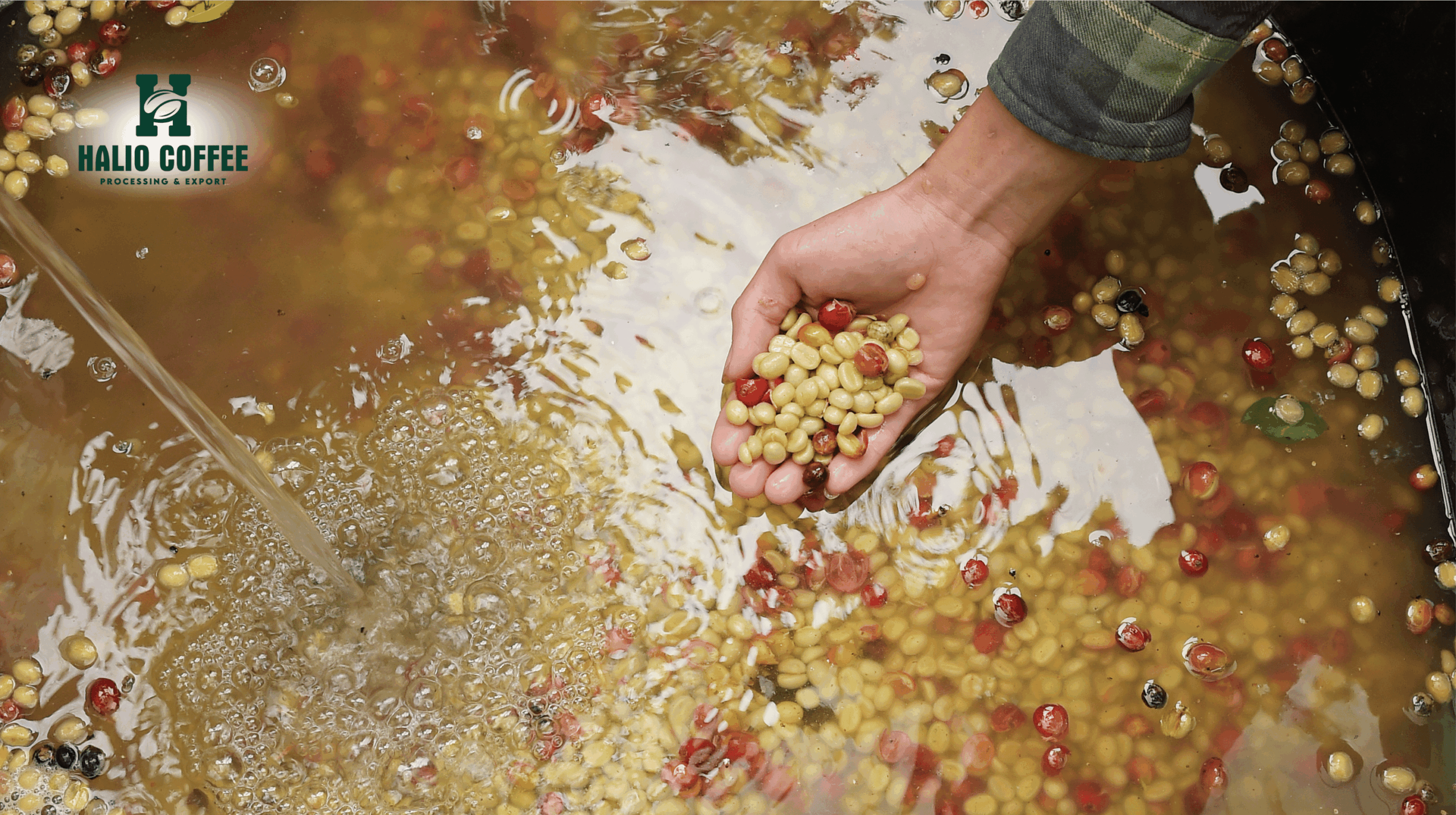Robusta Coffee for Roasters
Robusta coffee, while historically often undervalued compared to Arabica, is becoming increasingly vital for roasters worldwide. With its distinct characteristics and significant quality improvements, Robusta is not just a supplementary ingredient but a core component in many high-quality coffee products.
1. Understanding Robusta Coffee: Key Characteristics
Robusta (Coffea canephora) accounts for about 30-40% of global coffee production, with Vietnam being the largest producer. Key features of Robusta include:
- High Caffeine Content: Double or more than Arabica (around 2.5% – 4.5% compared to 1.5% for Arabica). This is the primary reason why Robusta is favored in coffees requiring a “strong kick.”
- Flavor Profile: Often described as bold, strong, slightly bitter, with earthy, woody, or rubbery notes. High-quality Robusta can exhibit chocolate, nutty, or roasted grain flavors, with less harshness and a good aftertaste.
- Body: Very full-bodied, providing a thick mouthfeel.
- Crema: When brewed as espresso, Robusta produces a thicker, more beautiful, and durable crema than Arabica, which is crucial for visual appeal and sensory experience.
- Resilience: Robusta plants are hardier, more resistant to pests and harsh climatic conditions, allowing cultivation in lower altitudes.
- Cost: Generally cheaper than Arabica, although Robusta prices have recently surged due to supply shortages and increased demand.
2. Why Roasters Need Robusta
Robusta offers numerous strategic benefits to roasters, serving various purposes:
- Creating the Perfect Espresso Blend: This is Robusta’s most common application. Robusta helps to:
- Increase Body and Structure: Produces a strong, full-bodied espresso that prevents the coffee from tasting “watered down” when mixed with milk (like in Lattes, Cappuccinos).
- Create Thick and Stable Crema: Crema is vital for aesthetics and is a sign of a well-extracted espresso. Robusta helps maintain a durable and attractive crema.
- Boost Caffeine Content: Meets the needs of many espresso consumers.
- Reduce Costs: When blended with Arabica, Robusta helps balance the overall cost of the blend while maintaining quality.
- Instant Coffee Production: Robusta is the primary ingredient for instant coffee due to its high soluble solids content, which optimizes production processes and costs.
- Product Diversification:
- Pour-over/Traditional Coffee: In Vietnam, Robusta is popular for pour-over coffee due to its distinctive strong flavor.
- Cold Brew: Some roasters experiment with Robusta for cold brew to create a potent, less acidic beverage.
- Cost Control: In the context of fluctuating and often high Arabica prices, Robusta provides a more economical option, helping roasters maintain profitability.
- Meeting Market Demand: A significant segment of consumers prefers Robusta’s strong, bitter flavor or requires a high caffeine content.
3. Key Factors Roasters Look for in Robusta
To select high-quality Robusta green beans (Premium Green Robusta Beans), roasters should pay attention to:
- Origin and Varietal:
- Specific Origin: Knowing the growing region (e.g., Robusta from Dak Lak, Lam Dong in Vietnam) helps roasters understand its potential flavor characteristics.
- Robusta Varietals: Some specific Robusta varietals may offer better quality.
- Green Bean Quality: This is the most crucial factor.
- Defect Rate: Premium Robusta coffee must have a very low percentage of defects (black beans, broken beans, insect damage, foreign matter). International standards are typically applied.
- Screen Size: Uniform bean size ensures more consistent roasting.
- Moisture Content: Ideally between 11% – 12.5%. Inappropriate moisture levels can affect roasting and storage.
- Color: Fresh green beans, without unusual discoloration.
- Processing Method:
- Natural/Dry Process: Most common for Robusta. The drying process must be strictly controlled to prevent mold or off-flavors.
- Washed Process: While less common, some producers are experimenting with washed Robusta for a cleaner taste and less earthy notes.
- Pulped Natural/Honey Process: Can offer a more complex flavor profile for Robusta.
- Cupping Profile: Roasters should request samples and conduct cupping sessions of roasted samples to evaluate the flavor:
- Bitterness: Balanced, not harsh.
- Body: Full-bodied.
- Flavor Notes: Pleasant notes like chocolate, nuts, roasted grains, with no off-flavors (rubbery, chemical).
- Aftertaste: Long-lasting, pleasant.
- Sustainability and Certifications:
- Organic: For roasters targeting the organic coffee market.
- Fair Trade, Rainforest Alliance, 4C, UTZ Certified: These certifications ensure coffee is sustainably and ethically produced, and are a significant plus for branding.
- Traceability: Increasingly important, especially with new regulations like the EUDR (EU Deforestation Regulation).
- Supplier Reputation: An experienced, reliable supplier with clear quality control processes and consistent supply capability.
See more:
- Organic Robusta Coffee Distributors
- Unroasted Robusta Coffee Beans
- Halio Coffee – Your Trusted Fresh Coffee Distributor of Robusta & Arabica Beans
4. Effective Robusta Selection and Roasting Techniques
- Choose the Right Robusta for the Purpose:
- Espresso Blend: Select clean, low-defect Robusta with nutty/chocolatey flavors and a high body to create crema and body.
- Instant Coffee: Can opt for more cost-effective Robusta that still ensures high soluble solids content.
- Pour-over/Traditional Coffee: Depends on the target market’s preference (e.g., in Vietnam, many prefer dark-roasted, bitter Robusta).
- Roasting Techniques: Robusta has a denser bean structure and lower sugar content than Arabica, requiring a different roasting profile:
- Initial Roasting Temperature: Can be slightly higher than Arabica to penetrate the bean.
- Roasting Time: Generally roasted a bit faster, or needs careful control to avoid burning or excessive bitterness.
- Roast Level: Often roasted from Medium-Dark to Dark to maximize its bold flavor and reduce harshness. However, high-quality Robusta can sometimes be roasted to a Medium level to reveal more complex notes.
- Separate Roasting: It’s advisable to roast Robusta separately and then post-blend with Arabica to optimize the roasting profile for each type.
5. Vietnam’s Robusta Context for Roasters
Vietnam, as the leading Robusta producer, plays a pivotal role in supplying Robusta to roasters globally.
- Abundant and Diverse Supply: Roasters have a wide range of Robusta origins to choose from different regions of the Central Highlands (Dak Lak, Lam Dong, Gia Lai, Dak Nong) with their unique flavor characteristics.
- Potential for High-Quality Robusta (Specialty Robusta): More and more farmers and cooperatives in Vietnam are focusing on producing high-quality Robusta, from cultivation and selective picking to processing (e.g., honey-processed, washed Robusta). This opens opportunities for roasters to seek out more complex-flavored Robusta.
- Competitive Pricing: Although Robusta prices have risen, they generally remain competitive compared to Arabica, helping roasters optimize costs.
- Traceability and Sustainability Challenges: International roasters increasingly demand high standards for sustainability and traceability (especially with the EUDR). Vietnamese suppliers need to exert more effort to meet these standards.
- Direct Partnership Opportunities: Some roasters are looking to partner directly with farms or cooperatives in Vietnam to ensure quality and sustainability.
Advice for Roasters when working with Vietnamese Robusta:
- Seek Reputable Suppliers: Prioritize suppliers with stringent quality control processes, international certifications, and traceability capabilities.
- Thorough Cupping and Evaluation: Don’t hesitate to request samples and conduct cupping to find the Robusta that best fits your flavor profile and intended use.
- Embrace High-Quality Trends: Explore specialty Robusta from Vietnam to create unique, value-added products.
- Understand Import/Export Regulations: Especially new sustainability regulations from major markets.
Conclusion
Robusta is no longer merely Arabica’s “little sibling” but has affirmed its position as an essential component in the modern coffee industry. For roasters, a deep understanding of Robusta, knowing how to select high-quality beans, and applying appropriate roasting techniques are key to creating diverse, appealing, and competitive coffee products that meet the growing demands of the global market. Vietnam, in its leading role in Robusta production, continues to be a crucial strategic partner for roasters worldwide.
- Coffee Processing Methods: Unlocking the Flavor Potential of Green Coffee Beans in the Global Market
- Arabica Coffee Beans for Roasting: Unlocking Quality and Consistency in Global Coffee Supply
- Coffee Prices Today 1/10: Slight Increase Amidst Low Inventory and Vietnam Crop Concerns
- Specialty Robusta Natural Process: A Deep Dive into Vietnam’s Coffee Revolution
- The Importer’s Compliance Blueprint: Navigating Vietnam Coffee Import Regulations in Key Global Markets







